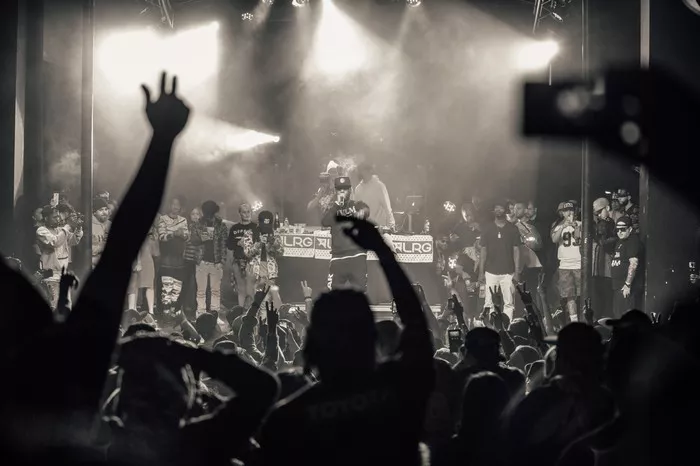Hip hop music has not only made its mark on the global music scene but has also carved out a unique cultural space for itself. Rooted in the African American and Latinx communities of the South Bronx in the 1970s, hip hop has evolved into a multifaceted art form with its own set of fundamental elements. In this article, we will delve into the heart of hip hop, uncovering the four basics that form its core identity and continue to shape the genre’s evolution.
1. Rhythm and Rhymes: The Beat of Hip Hop Music
Hip hop music wouldn’t be what it is without its rhythmic foundation. At its core, hip hop relies heavily on beats and percussion to set the tone and drive the narrative. These beats, often crafted with drum machines, samples, and synthesizers, create the infectious grooves that make hip hop tracks instantly recognizable.
The pulsating rhythm of hip hop music serves as the backdrop for the lyrical prowess of the MC (Master of Ceremonies), who lays down verses and rhymes over the beat. The art of rhyming, often referred to as “flow,” is a defining feature of hip hop. MCs use clever wordplay, metaphors, and storytelling techniques to convey their message and captivate the audience.
Whether it’s the laid-back flow of artists like Snoop Dogg, the rapid-fire delivery of Eminem, or the socially conscious verses of Kendrick Lamar, the rhyming component in hip hop music remains a constant thread that weaves through the genre’s diverse tapestry.
2. Breaking It Down: Dance as a Fundamental Element
While hip hop music is undoubtedly the heartbeat of the culture, it’s not the only aspect that defines hip hop. Dance, specifically breakdancing or “breaking,” is another fundamental element that contributes to the rich tapestry of hip hop culture.
Breaking emerged alongside hip hop music in the Bronx during the 1970s. It is a highly acrobatic and physically demanding dance form that incorporates moves like spins, freezes, and intricate footwork. B-boys and B-girls, as breakdancers are commonly known, use their bodies as instruments to interpret and respond to the music.
The relationship between hip hop music and breaking is symbiotic. The energy of the music fuels the dancers, while the dancers, in turn, enhance the visual aspect of live hip hop performances. Together, they create a dynamic synergy that has become an integral part of hip hop culture, making it not just an auditory experience but a visual and kinetic one as well.
3. Artistry Beyond Words: Graffiti as Visual Expression
Hip hop music and dance may dominate the auditory and physical aspects of the culture, but graffiti art is its visual counterpart. The vibrant and dynamic graffiti that adorns city walls and subway cars is another core element of hip hop culture.
Graffiti artists, often referred to as “writers,” use a variety of techniques and styles to create their art. The use of vibrant colors, intricate lettering, and symbolic imagery is a hallmark of graffiti art. These artists draw inspiration from their surroundings, personal experiences, and the themes found in hip hop music.
Much like the beats and rhymes of hip hop, graffiti serves as a form of self-expression and a means of conveying social and political messages. It is a visual dialogue that complements the lyrical narratives of MCs, creating a multi-sensory experience for hip hop enthusiasts.
4. Turntablism: The Art of DJing
Completing the quartet of fundamental elements is the art of DJing, a skill that has played a pivotal role in the evolution of hip hop music. DJs are the architects of the sonic landscape in hip hop, using turntables and mixers to manipulate records and create new sounds.
In the early days of hip hop, DJs like Grandmaster Flash and Kool Herc were instrumental in developing the genre. They introduced techniques such as cutting, scratching, and mixing, which became staples of hip hop music production. These techniques allowed DJs to transform existing tracks into something entirely new, adding their creative flair to the music.
The DJ’s role extends beyond the technical aspect; they are also responsible for selecting the right records to create a seamless flow of music at parties and events. This ability to read the crowd and curate the perfect playlist is a testament to the DJ’s artistry and their deep connection to hip hop music.
Conclusion
Hip hop music is far more than just a genre; it is a cultural phenomenon that has transcended geographical and social boundaries. While these four fundamental elements—rhythm and rhymes, dance, graffiti, and DJing—form the bedrock of hip hop, it’s essential to recognize that the culture is not static. It continues to evolve, incorporating new influences and innovations.
Today, hip hop music encompasses an incredibly diverse range of styles and subgenres. From the boom-bap of the East Coast to the G-funk of the West Coast, from trap music’s bass-heavy beats to the conscious lyricism of underground artists, hip hop has adapted and grown while staying true to its roots.
Furthermore, hip hop has become a global phenomenon, with artists and enthusiasts from all corners of the world contributing to its expansion. It serves as a platform for individuals to express their unique experiences, perspectives, and stories, making it a truly universal art form.
In conclusion, hip hop music is a multifaceted cultural force that can’t be distilled into a single element. It is the fusion of rhythm and rhymes, dance, graffiti, and DJing that gives hip hop its unique identity. These elements, born from the streets of the Bronx, continue to resonate with people worldwide, inspiring creativity, self-expression, and social change. As we celebrate the legacy of hip hop, we must also look forward to its future, knowing that it will undoubtedly continue to evolve and shape the world of music and culture for generations to come.

